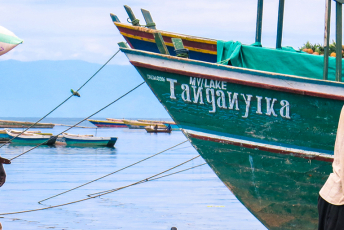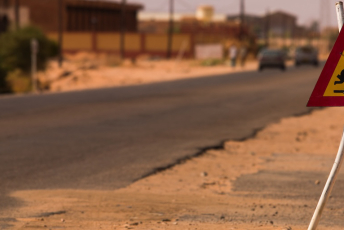In the first half of 2019, Kenya's Directorate of Criminal Investigations (DCI Kenya) recorded more than seven human smuggling incidents. These successive incidents seem to indicate a surge in voluntary smuggling on the southern route to South Africa, using Kenya as a transit point.
Through its twitter handle, DCI Kenya said that in March alone, Kenyan police arrested eight Eritreans, 25 Burundians and 10 Ethiopians. In April, nine Ethiopians were arrested at a smuggling ‘safe house’ in Nairobi county alongside a suspected Kenyan smuggler. In May, police arrested 22 Eritreans and four Kenyan smugglers.
During the raids, police seized various fake travel and identity documents, including visas, passports and identification papers for various states. Police said the smugglers are part of a larger network operating in Kenya.
There are two legs for southbound migrants. The first is from Ethiopia to Kenya, the second from Kenya to South Africa. Rashid Mabole, an Isiolo county official, told ENACT that the smuggling fee for the first leg of the southern route – from Ethiopia to Kenya – is US$1 000 per person. The fee covers entry into Kenya from Ethiopia through the Kenyan border town Moyale, transiting through Isiolo or Nairobi counties, and up to Namanga town on the Tanzania border. Isiolo and Nairobi are the smugglers’ counties of choice. Speaking on condition of anonymity, another state official said that corruption among local government officials make it easier to acquire fake identity or travel documents in those two counties than in other parts of the country.
Between Moyale and Isiolo, at least 11 permanent and around five temporary police check points dot the 500 km stretch. In 2017, the smuggling fee was US$300 per person. The hike to US$1 000 is due to the increase in the number of police checkpoints over the past two years. The higher the number, the more times the smugglers have to pay bribes.
According to the state official, smugglers prefer using the Moyale route, despite the increased police presence. The official added that smugglers bribe the police US$10 per person to let them pass each checkpoint.
According to Mabole, the second leg costs US$500 per person, per national border crossing. The route taken typically runs from Tanzania through Malawi, Zambia, Zimbabwe and finally South Africa. In mapping the southern route, a 2018 UN Office of Drugs and Crime study on smuggling of migrants also points to the use of land routes through Kenya, Tanzania and Mozambique.
In most of these countries, English is one of the official languages. This makes it easier to move people, and for smugglers to forge South African travel and identity documents. In Tanzania, migrants are given a fake South African document to move through these transit countries. Mabole adds that smugglers operate as interconnected networks based in the route countries. The Kenyan network hands over people to the Tanzanian network and so on until they reach their destination.
The average total smuggling fee from the Horn of Africa to South Africa is thus around US$3 500. This is a large amount of money considering that most of the migrants come from impoverished backgrounds. The Kenyan leg costs relatively more due to the many bribes paid at police checkpoints.
The uptick in the use of the southern route indicates two things. There is protracted conflict between and among communities in Horn of Africa countries. Families often pool resources to send two or three of members abroad in search of better lives for themselves, and for those at home through anticipated remittances.
Secondly, the northbound option to Europe is dangerous and expensive. The route to Europe is longer and involves crossing the sea. Migrants risk being trafficked and enslaved, and it also costs more. For example, in late 2016, Eritrean migrants had to pay between US$3 000 and US$5 000 just to travel to Sudan or Ethiopia. From there, they then have to pay another fee for the second leg to Libya. The Mediterranean crossing itself and transport to destination countries in Europe involve further costs. Hence, the prospect of being smuggled to South Africa is more favourable when compared to the northern route to Europe.
The number of undocumented migrants in South Africa is contested. According to the most recent migration census in 2011 by the South African government, the country had almost 2.2 million international migrants. The census does not indicate the number of undocumented migrants. The next census will be in 2021.
The recent dismantling of several human smuggling rings by the Kenyan government is commendable. In April 2019, Kenya launched an integrated identity system, Huduma Namba, which is a biometric register of all Kenyans in the country, part of the international diaspora community and also foreigners resident in Kenya. As a master population register, Huduma Namba will have capture the identities of people living in Kenya, and Kenyans living outside the country. This will go some way in addressing human smuggling, as forged documents will easily be intercepted using the master population register. But since the problem is not restricted to Kenya, cross-border collaboration with other countries on the southern route is likely to be an extra deterrent.
Mohamed Daghar, Researcher, ENACT project, ISS







